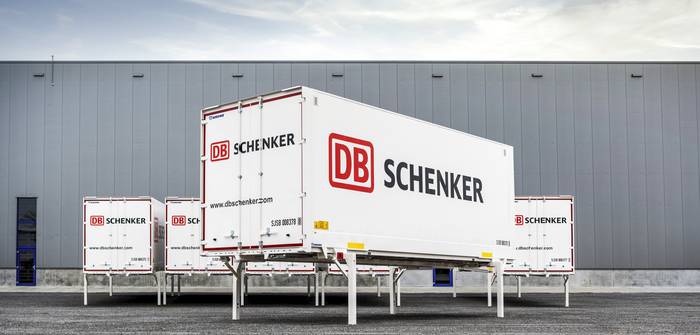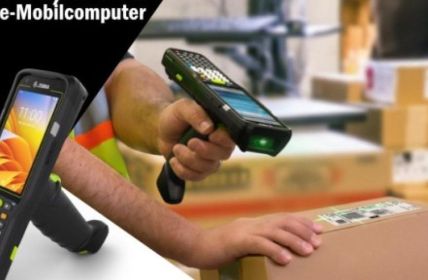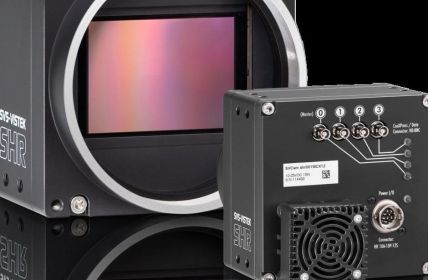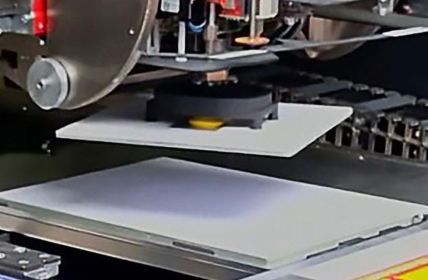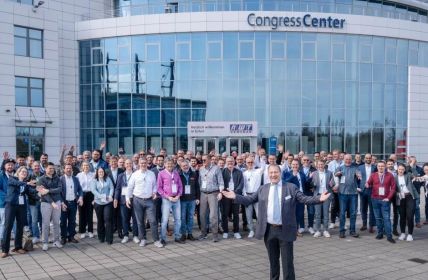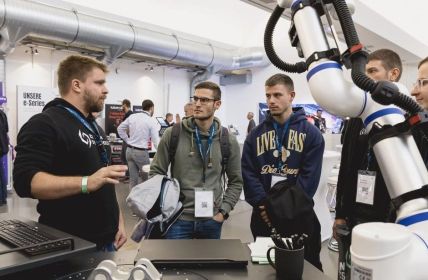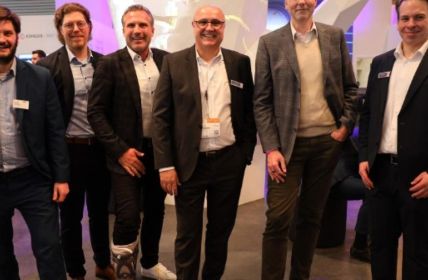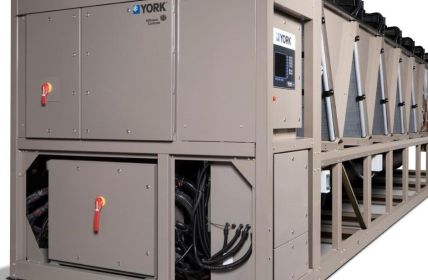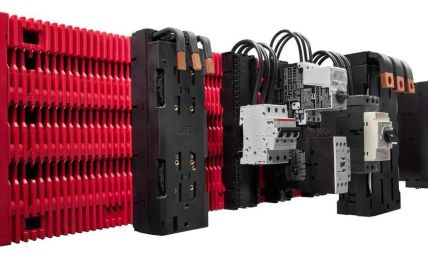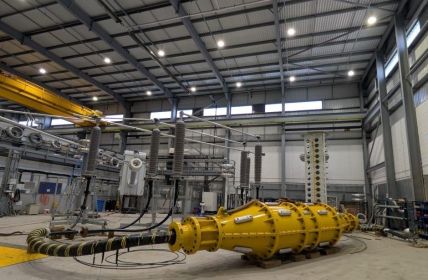DB Schenker presents itself as visionary and is quick to recognise the potential offered by maintenance-free solar telematics for monitoring the movements of its fleet of swap bodies (SB). The world’s leading provider of global logistics services is one of the first companies to equip its SB fleet with the first product generation GPSsolar by MECOMO. This is visualised via the Telematic portal mecFLEET. The second innovation level was launched at the end of 2020. The entire fleet is now being successively upgraded with the mobile gateway mecSOLAR, the latest product generation from MECOMO. The key feature of the modern telematics technology: the addition of an integrated IoT gateway function to connect wireless sensor tags. Linked with the Wirepas Massive IoT technology, this results in a great deal of design freedom. It enables DB Schenker to integrate wireless asset sensor tags or IoT sensors made by various manufacturers in the field.
Table of Contents: What awaits you in this article
Maintenance-free Solar Telematics: Investment in Flexibility
Especially in times when global supply chains are under pressure, the logistics sector plays an indispensable role in economy. Regulatory requirements such as the supply chain law also increase the demands on the quality of the value-added service in logistics based on data. The chronological order of shipping, the temperature or the time of arrival of the goods all are examples of relevant data. Accurate, reliable and, depending on the case, also in real-time, these must be retrievable for smooth processes. In integrated logistics, all parts of the supply chain are linked together. Solar telematics has, among other things, brought more flexibility to the area due to real-time transparency (“supply chain visibility”). It provides the ideal and environmentally-friendly basis for the collection of data in respect of logistics objects that are not supplied with electricity.
MECOMO provides mobile gateway for the tracking of swap bodies
The product category of maintenance-free solar telematics was first introduced to the market for fleet-wide deployment in 2008 by MECOMO, one of the leading providers of tracking solutions. The product line mecSOLAR provides maintenance-free monitoring of the movement of non-powered logistics objects with immediate data transmission. The detection device was developed specifically for pulled logistics objects such as, for instance, swap bodies. mecSOLAR supports the latest mobile communications networks CAT-M1 or LTE-M (these wireless technologies are part of the 5G sector) and enables the implementation of many vertical solutions relevant to logistics, thanks to built-in sensors. In addition, the latest generation enables detailed status monitoring of the logistics object as well as individual applications, in which real-time information on the status of the cargo is linked to the location data. All data are contextualised, using the mecFLEET platform, an intelligent telematics portal.
DB Schenker finds a long-term partner in MECOMO
In 2009, DB Schenker was faced with the challenge of insufficient tracking of swap bodies. At that time, the logistics service provider was deploying swap bodies in 18 European countries. Today, this has already increased to 30. In particular with regards to long distances, for instance, from Stockholm to Lisbon, with transport times of up to four days, it is not practical to manually track which swap body is located in which country. Ultimately, the solution was found in the MECOMO technology, and 2010 saw the beginning of the fleet being equipped. At this point, both companies were carrying out pioneering work. The willingness of DB Schenker to embrace innovation should be emphasised; at the time, the company invested with foresight in solar telematics technology that had not yet been proven in the field. With success.
Extensive tracking thanks to maintenance-free solar telematics
Since the end of 2020, DB Schenker has been relying on the product mecSOLAR. The mobile gateways are fitted to the units and connected to the mecFLEET platform. In this way, the tracking as well as the context-related transmission of location data can be carried out. As an intelligent switchboard, mecFLEET manages the readiness of mecSOLAR, visualises the locations of the swap bodies, compiles comprehensive reports (e.g. fleet productivity, occupancy of locations, etc.), and transmits the collected raw data of the units and sensors prepared with context to the central “data lake” of DB Schenker. Intelligent functions guarantee long-term use: For instance, if the unit is stationary for a longer period of time, location data are not transmitted. mecFLEET converts the data received to useful information and sends such information to the IoT portal of DB Schenker via an interface. The logistics company uses the MECOMO solar telematics increasingly for trailers as well. The main objective: extensive tracking of swap bodies as well as trailers.
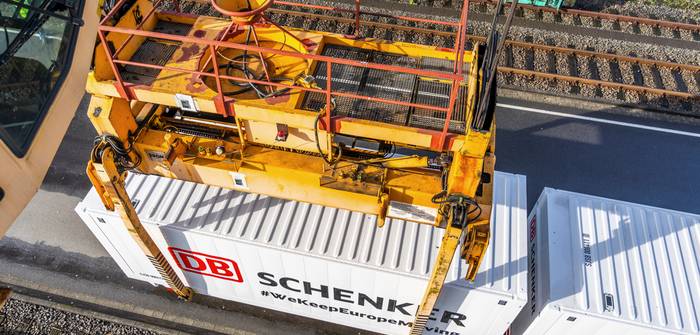
The DB Schenker swap bodies are fitted with the mobile gateway mecSOLAR, as can be seen here on the right in the picture. (Picture: DB Schenker)
MESH IoT: Trendsetting for logistics
With the change to mecSOLAR in 2020, the swarm technology Massive IoT of the Finnish company Wirepas came into play. DB Schenker once again demonstrated visionary foresight and recognised that in the world of wireless sensors held the key to serving a wide variety of use cases in combination with absolute flexibility. In addition, for a global logistics specialist, it is imperative that new technologies also function on a large scale. The full scalability of Wirepas Massive IoT meets this requirement. The mecSOLAR IoT fitted to the swap body or the trailer is provided with a Wirepas node. This has the ability to collect, process, and transmit the data from sensors or tags. The battery-operated, inexpensive sensors can be enclosed with the goods that are being transported, and their data reach the back end by Bluetooth via the mobile gateway. Any additional functions for the SB can also be provided, e.g. door sensors or smart security locks.
Freedom of design due to the ecosystem of manufacturers
For the swarm technology of Wirepas, also called MESH IoT, there is already a widespread ecosystem of tag manufacturers. This results in a great deal of design flexibility for DB Schenker. “We would like to stay flexible”, the company says. It enables the logistics service provider to integrate wireless asset sensor tags or IoT sensors made by various manufacturers in the field without significant additional expense. The addition of the MECOMO with the Wirepas technology is thereby a perfect fit. The two companies had already found each other in 2017 through the solution area for sea container carriers. As technology partners, together, they form an “innovation platform” for the value-added service of the future.
Maintenance-free Solar Telematics: Why with Wirepas MESH?
Thanks to the Wirepas MESH technology, clients’ needs can be covered even more comprehensively in the future. In the past, a new use case could only be integrated into the existing infrastructure with very high costs. Now, numerous use cases can be mapped over time since, among other things, it is not necessary to reorder additional telematics hardware. Wirepas facilitates any scalability. Thanks to wireless, battery-operated technology, radio coverage is also possible in the warehouse with low infrastructure and maintenance costs. This way, a sensor with its data will always find its way to the gateway (over-the-air update option). In the area of the gateway, the Duo MECOMO and Wirepas provide a crucial advantage, as their technology ensures constant availability due to the fact that it does not require any maintenance. In the past, it was also expensive to build the appropriate infrastructure in warehouses or handling centres. With technologies such as ultra-broadband and Bluetooth, the need for many power cables alone caused prohibitively high costs and complexity. Marketable Wirepas-compatible, fixed gateways can be used flexibly at each location, and a small number is sufficient to ensure the “roaming” of the sensors that are connected to the cargo. Without wiring, installation and maintenance are also simple. There is no need for an expensive specialist. The sensor tag can thus be affixed to the chosen place in a straightforward manner.


